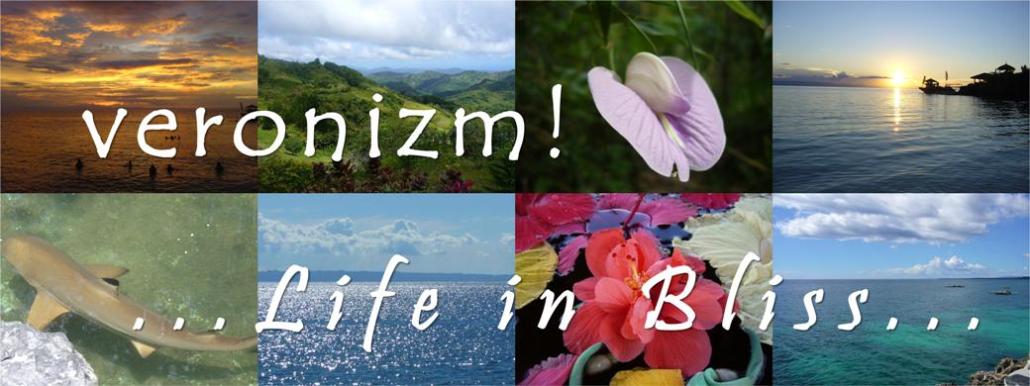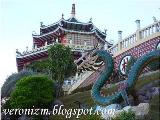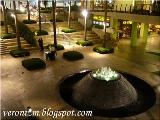Fort San Pedro, Plaza Independencia, Cebu City
It’s been a while since I’ve been to Fort San Pedro in Plaza Independencia, Cebu. I remember back when I was a kid, my family and I used to go there every Sunday after church. Now, I think it has been more than 20 years since I’ve last visited it.
They’ve made some renovations on Plaza Independencia and although it was very I’m not really against improvements, I must say that I was not very much impressed by it. Mainly because it only has very few trees and greenery! Well... there were trees on its perimeter but not so much on the center of the park. I guess they made it so on purpose for events and such?
Anyway, they haven't made drastic changes (that's expected of course) on Fort San Pedro in which I'm quite thankful for. I could still see myself as a little kid running through the grass or eating Mom’s pizza with my family on the benches by the walk path =)
The first thing that would greet you when you enter the gates of the Fort is, well aside from the entrance collector (LOL), a wall that hosts different paintings and sketches that tell about the history of Cebu and the founding of the Fort.
Here's a little bit of history about Cebu:
And following is a little history about the fort (taken from this photo below)
Fort San Pedro is actually one of the oldest forts in the Philippines. It was built in May 8, 1565 with Miguel Lopez de Legazpi himself breaking the ground. Its name was coined from Legazpi's flagship which sailed the Pacific Ocean in 1565. The fort was built as a defense by the Spaniards during the time of colonization and was built by the shore since most of the native attacks came from the sea.
Fort San Pedro served as a nucleus of the established settlement in the Philippines. From a report submitted by Professor Marcelino Marceda, the fort is triangular in shape with two sides facing the sea and the third fronting the land/city (main gate). These three bastions were named La Concepcion (SW), Ignacio de Loyola (SE), and San Miguel (NE).
Fuerza San Pedro also contained necessary buildings. The largest of these is the Cuerpo de Guardia, which housed the personnel who manned the fort. Adjacent to it is the Viviende del Teniente, which was where the Lieutenant of the fort lived.
In between these two buildings is a well, and at one corner attached to the walls of the San Miguel bastion was the Almazanes del Polvora (power magazine) where the fort's supply of arms and gunpowder from Manila were stored.
Right now the Viviende del Ateniente hosts historical photos of Cebu. Here are some of the photos:
 |
| The Battle of Mactan |
 |
| Lapu-lapu, Warrior King of Mactan |
 |
| Battle of Tres de Abril |
 |
| Rajah Humabon, Trader King of Sugbu |
 |
| Queen Juana, Keeper of the Sto. Niño |
 |
| Rajah Humabon and Ferdinand Magellan conducting "blood compact" as a pact of friendship. |
Since then the fort has served many purposes. In the years of 1931 to 1941, it was used as schoolrooms were many Cebuanos received their formal education. During the World War II, the Japanese took refuge within the walls where they constructed trenches and dug tunnels inside the court leading to the sea. It was also used as an emergency hospital for the wounded during the war for liberation. And in 1957, the city councilor commissioned a religious sect called The Lamplighter to manage a zoo subsidized by the city within the courtyard.
In the years of 1946 to 1950 , the fort was used as an army camp. And after 1950, the Cebu Garden Club took over and fixed the courtyard into a miniature garden. These days the fort still does look like a garden where you can actually hold parties, events and such (fees may apply).
I personally love this walk path with those overhead flower vines and neat benches on the side.
This ramp will lead you to the upper deck of the Fort, which was utilized before for different offices such as the first clinic of the City Health, office of the Presidential Arm and Community Development, and the Lieutenant's Quarters were used as a field office by the City Public Works.
As you can see, the upper deck itself is like a garden where you can take leisurely walks or just hang out by the wood benches and take in the historic scenery.
The total area inside the fort is 2,025.6 sq. Meters and has a circumference of 1248 feet. The walls are 20 feet high, 8 feet thick, and the towers are 30 feet high from the ground level. There are 14 cannons mounted in their emplacements, most of which are still there today.
So I guess that's all for now. Thank you so much for dropping by! Till my next post!












































.jpg)










